#wtc constructions
Explore tagged Tumblr posts
Text
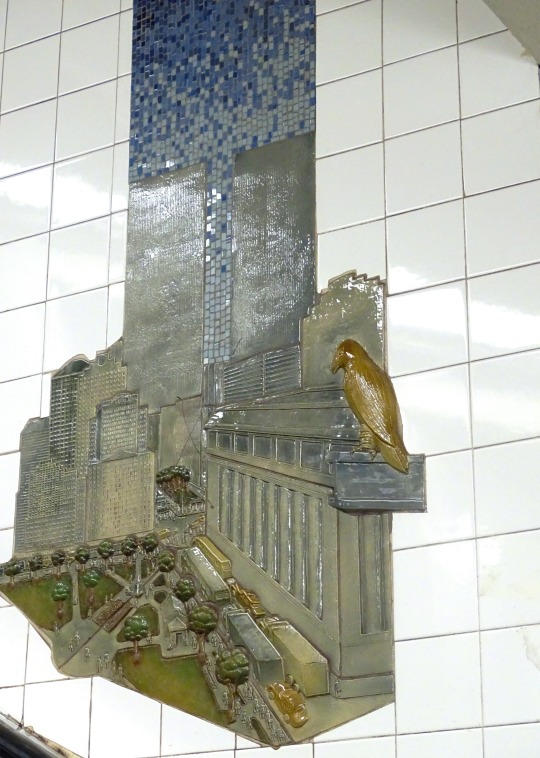
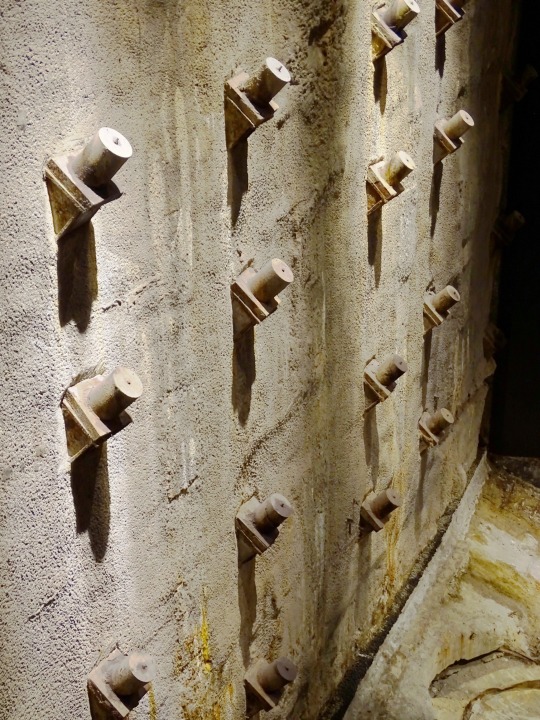
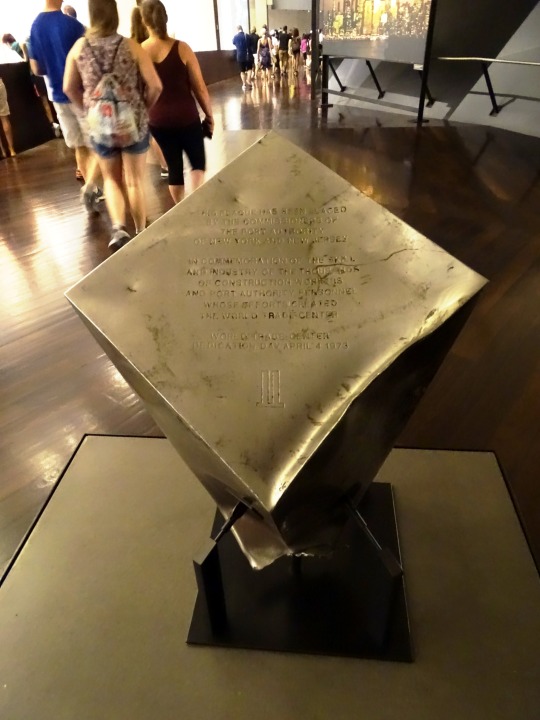
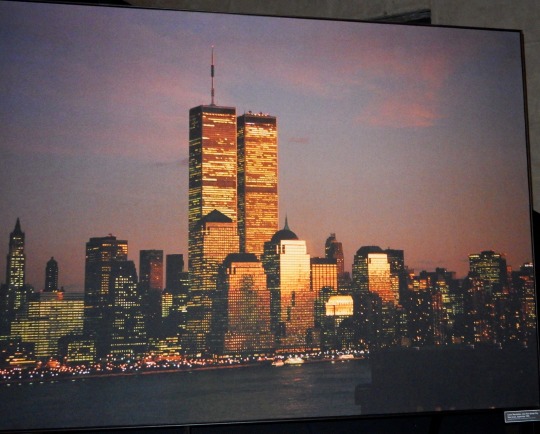
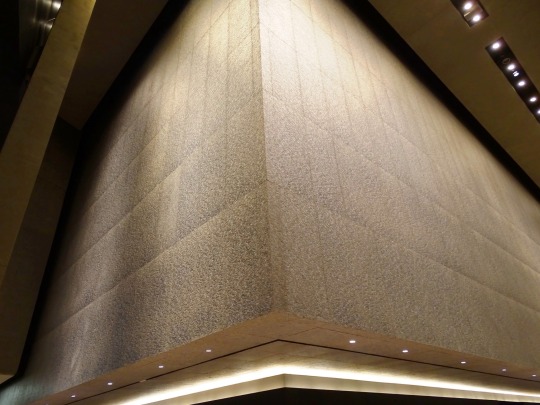
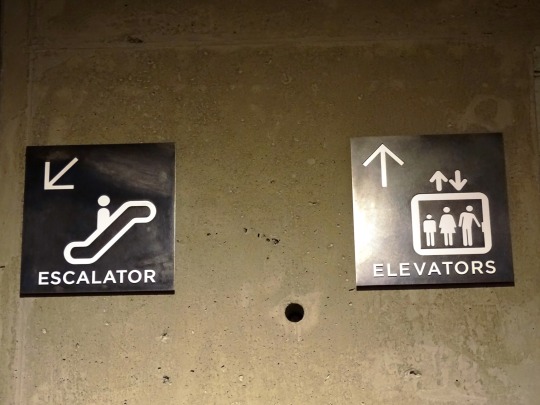



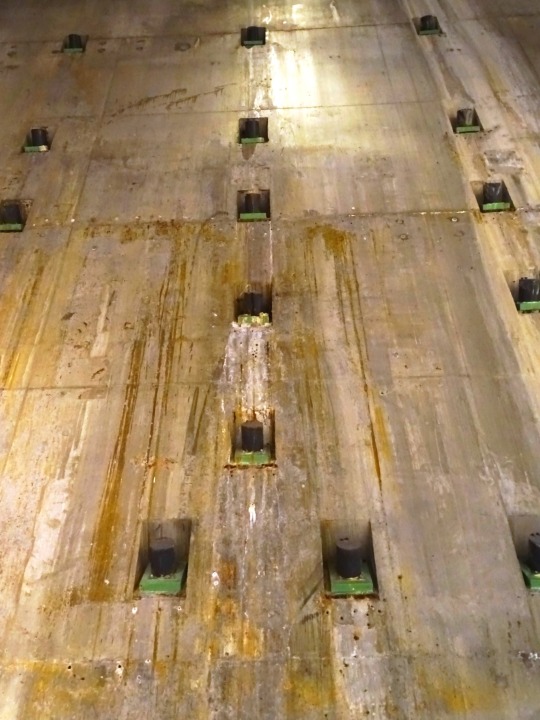

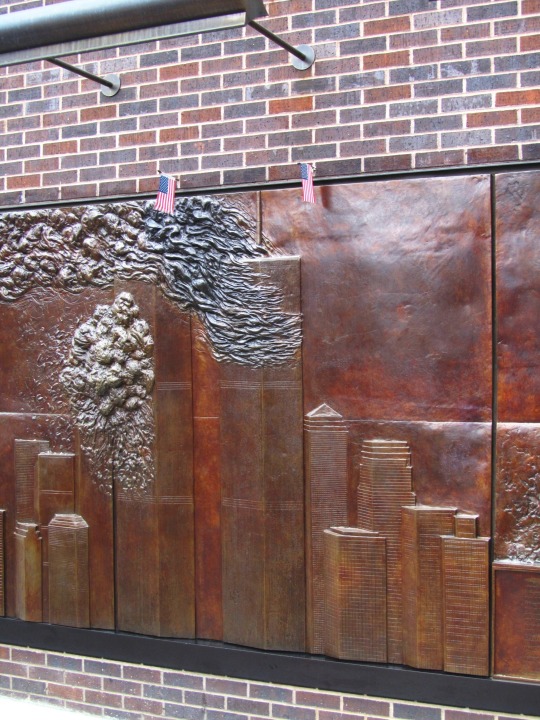
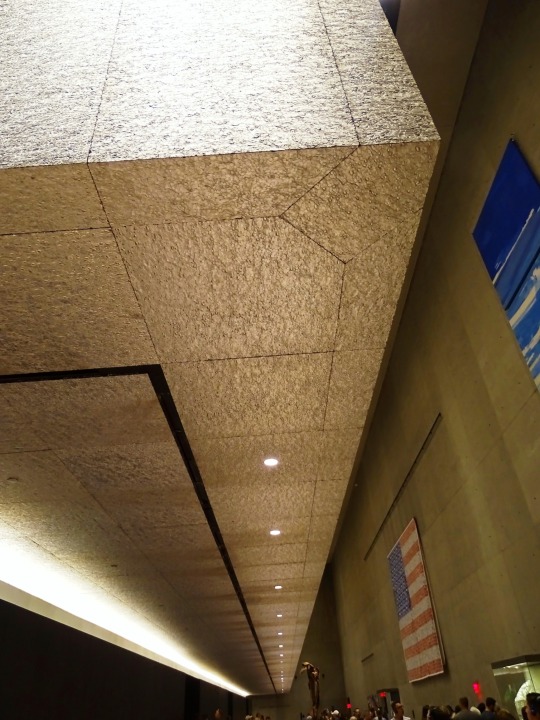
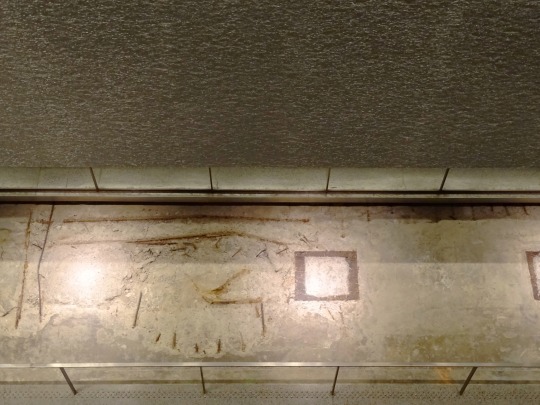

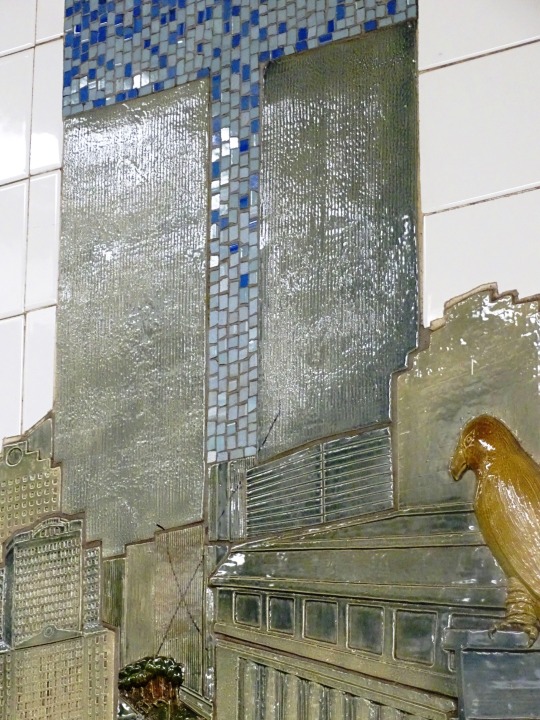
The North Tower of the World Trade Center in Manhattan was topped out at 1,368 feet (417 m), making it the tallest building in the world, on December 23, 1970.
#WTC Construction Dedication Pedestal#North Tower#World Trade Center#Manhattan#topped out#23 December 1970#anniversary#US history#travel#National September 11 Memorial & Museum#retaining wall#2018#USA#summer 2013#FDNY Memorial Wall Story#One World Trade Center#1 World Trade Center#Twin Towers by Frank Giorgioni#Brooklyn#Lower Manhattan#New York City#gone but never forgotten#Minoru Yamasaki#Emery Roth & Sons#original photography#vacation#tourist attraction#landmark
4 notes
·
View notes
Text
anyway after reading a few reports and eight different books, here is my book report about 9/11
Contemporary media messaging focused mainly on how much of a tragedy the events of 9/11 were, and that conclusion is not, strictly, wrong.
However, the reasons that 9/11 was able to happen the way it did are best described as “a truly astounding series of fuck-ups and failures to communicate”.
The design of the towers alone is enough to make your palms sweat; usable floor space was maximized, which included concentrating emergency exit stairwells near the center core of the towers. Additionally, the stairwells did not proceed straight down; at points, some of them detoured around machine rooms in their tower, creating hallways that confused users. Signage was minimal, if it existed at all. The team designing the towers was able to successfully argue their way into having only three emergency stairwells per tower. None of these stairwells were required to have fire-resistant construction; their walls were, like, normal sheetrock. Based on photos, the exit stairs were barely wide enough for two people to stand shoulder-to-shoulder. These were buildings expected to have a population in the tens of thousands every workday.
Put simply: when the towers were designed, no high rise of their kind had ever collapsed solely due to fire. People seemed to believe that no steel-frame high rise could collapse from fire. No ship is unsinkable, and no building will stand regardless of conditions.
In 1993, a truck bomb was detonated in the basement of the WTC. It took multiple hours to evacuate the buildings, and at that time there was no planning for evacuating those who could not walk down the stairs. After the bombing, two changes were made: fluorescent markings were added in the exit stairwells, and “evacuchairs” were made available for the use of those who could not walk. These changes saved lives on 9/11.
Disabled people were still at grave risk compared to their abled coworkers. I may go back through my reading and dig a little deeper on this because I have skin in the game. There are two men I’m thinking of specifically, both of whom used electric wheelchairs. One, with the help of ten of his coworkers and an evacuchair, made it out alive. One sent his aide (who survived) out of the building, and chose to wait for rescue. He did not survive. At the moment that one of the towers collapsed, multiple disabled people were waiting for rescue in the lowest of the skylobbies.
Sidenote: there is one case where, arguably, one person’s disability saved multiple lives. Josephine Harris, a middle-aged woman with fallen arches, made it down a couple dozen flights before her foot pain forced her to stop. A group of firefighters encountered her and began to help her down the stairs, though she could barely walk. They had not yet made it to the ground when the north tower collapsed. Cocooned within the rubble, Josephine and all the firefighters with her survived; if they had been any higher or lower in the stairwell, it’s anyone’s guess if any of them would have survived. This is just one of many fascinating survivor stories.
A note I can’t resist making: jet fuel doesn’t have to melt steel beams to a liquid in order to destroy a high-rise. It just has to soften the steel to the point where it can no longer support the building’s weight. And that is exactly what happened when fire, ignited by the jet fuel ejected into the towers when the planes impacted them, ripped through the flammable furnishings of the towers.
Multiple government agencies were aware on some level that: the US needed to be aware of terrorism as a possibility; Osama bin Laden was worth keeping an eye on; as the 1990s ended, al Qaeda was clearly escalating towards a larger act of terrorism, possibly involving either bombs or airplanes. All were only aware of certain pieces of the puzzle; no one had the high-level awareness necessary to correctly assemble it. No one knew it was too late to stop an attack from occurring until it already had. (And, of course, hindsight is 20/20.)
Prior to 9/11, there were some basic screening protocols used in airports, including X-ray scanning (presumably of bags only) and magnetometers (for people). It is common for security systems to be “red teamed”, which is where plainclothes staff attempt to sneak dangerous items past screening. The FAA kept failing their red team tests. Repeatedly. To a concerning degree.
NYPD and FDNY kept disagreeing about walkie-talkie usage during the 1990s; a few years before 9/11, new radio systems had been purchased with the intent of allowing inter-agency communication on-scene, but they were effectively unused.
Additionally, after 1993 it was known that communicating effectively by walkie-talkies in the WTC complex was very difficult. (I can tell you that trying to communicate by radio in a large steel-framed structure is hard enough when you’re not in the middle of a chaotic disaster.) A signal repeater was installed, but there was confusion over getting it to work; experiencing repeated difficulties, some people decided that radio just wasn’t gonna work that day, and gave up trying to fix it. So first responders on the scene often literally could not talk to each other except face-to-face. And because of the way the NYC 911 system worked at that time, no one was able to make widely available the potentially life-saving information that Stairwell A in the south tower was passable from essentially bottom to top.
9/11 was a terrible tragedy and I do not intend to cast blame on anyone or any agency I’ve named or alluded to in this post, with the exception of al Qaeda and Osama bin Laden.
I’ve done all this reading because when 9/11 happened, and in the years immediately following, I was just old enough to be vaguely aware of what was going on. But I’m too old to have learned about 9/11 in school — it appeared on the very last page of one history textbook I had in high school, and we never even made it to WWII in that class. So I remember what it felt like at the time, but I wasn’t aware of the higher-level implications of anything that was going on, nor did I understand the history that had led up to it all.
What I’ve also come to realize is that people my age will, some day, be the only people who consciously remember 9/11. It left a huge mark on all our lives, and I want to be able to talk more about it than just to say “well, I was eight”.
Reading list to follow in another post.
32 notes
·
View notes
Text
Way too obsessed with the Suits window backdrops: the post
Okay, fellow Suits fans, help me out here...
First of all, I don't think the view out the office windows is really NYC, but nor is it Toronto! The firm is canonically located on E 54th Street, in Midtown:
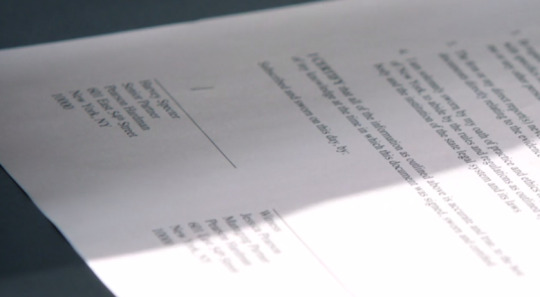
Thank you, blurry screenshot, you are my everything
I honestly couldn't tell you what it is they've put on their adorable shower curtain backdrops (I love those things so much lmao), but it doesn't look like the Midtown I'm used to. Plenty of buildings there have as many or more stories as the fictional Suits skyscraper, but I don't recognise most of them, and I'll admit they do make it look like they're on a much lower floor than 50 (in my opinion).
With that in mind, knowing that I'm never going to actually get canonical closure on this one (a fact that is killing me just a tiny bit): what do all of you think the view out those office windows is supposed to be? What directions are Harvey's and Jessica's offices facing? Can they see the Hudson? The Chrysler Building? One WTC (albeit under construction through S3-S4)? I know I shouldn't be putting this degree of thought into it, but I can't help myself! Does anyone have any particular headcanons for this one, or is there some degree of fandom consensus among giant nerds like me? For fic purposes I'd love to put Harvey's office facing southwest, and Jessica's northwest, but I'd love to know everybody else's thoughts...

*shakes Jessica very gently* babygirl please tell me what you see out that window....
#suits tv#suits usa#suits#jessica pearson#harvey specter#(since this is about their offices lol)#headcanons#meta#text post#katiapost#literally I'm way too obsessed with this but i neeeeeed it#I've already spent time in street view looking at the DA's office where Harvey worked once#the fact that Harvey's office was once Jessica's office also factors into this for me#what he sees NOW is what she saw THEN y'know???
11 notes
·
View notes
Text




We don’t have a view of 1 WTC at sunset anymore because the building under construction next door is now taller than our rooftop, but the light was still pretty nice tonight.
6 notes
·
View notes
Text
the tale of how these Rose Guns Days end...
here we have it. I have many thoughts but for the sake of not making a thousand posts of my same surface level analysis, I'll just talk about individual characters and my impressions of their endings...
Rose is one of my favourite protagonists of the whole 07th/wtc lot (if it has a Miyoko Tanashi it might as well be wtc) despite her writing being very frustrating at times. the complex got her good... her ending being a bittersweet one in which she's at her lowest point mentally that we've seen her ever since the Caleb arc makes sense when she was locked up for a year and in her own personal hell, being totally unable to do anything and even speak in her own voice to her friends. similarly to what I said in my Meijiu and Wang post, the vagueness of the 1950 ending, Rose choosing how she's going to be seen, all serves to give Rose control of her narrative... I think the part with Julie doesn't land as well, it didn't reveal too much so I think it still worked
Leo has frustrated me from beginning to end which I've laid out in real time. I think I can deal with many problems with him by just looking at Jeanne's authorship. everyone helped but Leo in this domino sense is the person who started it all and helped turn Jeanne's life around. so of course he's portrayed as super competent as he is. as for him always joking and flirting, it's the impression she got from their time together! imagine Battler from the first two episodes of Umineko... still I'm disappointed that he didn't grow on me and only became more disliked (because of thing with Zel)
Richard is just legendary. I need to put him next because as a counterpart to Rose he's genuinely one of the best antagonists to me. the way he's constructed gradually, getting to know him and seeing the cracks in his nice facade and then the complete unraveling of him after losing his whole family. I love his dynamic with Rose, Stella, Keith, Meijiu, and of course Cyrus his bff who I will add on here because I don't have much to say about him... I like how Cyrus deconstructed every role that he was put in and always felt like a person
Meijiu felt like the deuteragonist to me because his relationship with Rose and Richard, his arc in the second and third season were so strong that everything I could say won't measure up... I'm so happy with his ending since first off he didn't die and whatever I wanted to happen could happen next at this point. I could say I wanted him to do more but I love that he gets an ending where he plays the support role he always wanted to play
Gabriel is great! I think he was a bit overhyped to me but he managed to pull through. his duel with Richard and Butler coming in as I've said was just terrific and a much better ending than Primavera group storming in and defeating him but with his death very few things actually change which imo works for the bittersweet ending. we saw how he was disliked in the ghq, which doesn't make ghq benevolent and not full of other people who will terrorise the city in more subtle ways that aren't mired in trauma-driven revenge but just disdain. Butler was the perfect character to illustrate this with his jovial image, lack of principles and all, in the end he's in a very good position to return to his old ways but inside he's just not the same...
I want to say Alan and Keith invented love but they invented some more complicated things... again maybe I come off as super positive about everything but I love their ending! Alan shielding Keith's head as they fall, Keith's realisation and of course cutting off just at that moment was cruel in the best way... Xiaolan seeing that Alan might be dead was harrowing though... my parentified child's turn to feel Alan-style guilt for something she couldn't directly control but she got involved so I guess it's on her. I think this moment was the best part of the ending because it could really be anything. the next moment, Alan could moan in pain still alive, Keith could shoot at Xiaolan if he has anything to shoot with and run away, etc...
Zel, Nina and Charles had a sweet, heroic ending just for something different... but keeping in that bittersweet tone. imo these kids had some of the most solid writing in the whole story and it's very satisfying to see it wrapped up this way. the next is truly up to them... I think the part with Oliver's grave was a bit on the nose but I'm here for that. they made me wish for an epilogue just to see if they're still hanging out together as adults but I think having the space to imagine it is perfect...
Zilong almost gets away with not doing anything but detectiveing in the background and talking to other mafia bosses since he was introduced later than most, but I'm really glad we actually got to meet him, and not just a shadowy figure on the phone, specifically that Rose got to meet him... the "Rose's group meets with the gds" part was kind of sloppy to me considering all the buildup, but it's good enough. the gds as a group are my favourites here (isn't it obvious) so good for him
some disappointments: I think I understand the point of everything with Stella and Meixue but I still can't get over how they were chewed up by the narrative, especially Stella who had some of the best potential as a character, at least play a more key role in the second arc rather than just delivering a letter. in the process of the story of the mythmaking around these dead women not unlike Rose... the story has to lose two standout women characters so I'm happy I was spoiled on Stella being marked for death early on. I think in killing them off undoubtedly and not characters like Alfred the point is obviously that death isn't narrative punishment for those who deserved it but a tragedy to be treated with gravity... sigh...
Claudia and Meryl's diminishing roles didn't help much. I love them both to bits and Meryl at least got her double bookkeeping moment, solidifying her as a core member of the group, where I felt a lot of the original gang besides Rose and Richard were kind of flattened. what is Wayne's role even. kidding... Wayne grew on me and I think he had a very interesting arc... which we don't see most of. old Wayne is terrific, I always liked his comments
Caleb and Miguel coming back and fighting with Rose was fun, I was always kind of confused by their redemption but I guess it's very telling of Rose. Rose needs to love herself more. Amanda too... I really don't know why she's still with these guys, I assume she has nowhere else to go. there was a real affection between Amanda and Caleb but he was and still is not a good partner to her... she's got one of the most negative endings to me but like I always say it's vague enough. maybe she gets a chance to turn her life around like Jeanne?
Jeanne. Jeanne is a liar sometimes. I'm still very fond of her almost as much as I like pinning any problems I had with the narrative on her. I think on a reread it'd be key to read it all with the full context of who Jeanne was in mind. handing off her seat to Julie because of her grandma... after Jeanne got it partially because of her grandpa was a bit comical. I don't know what to think of that whole born leader thing. Jeanne still came through with her personality and force of will developed through her life and hardships - it's that her noble heritage was a plus to make her more palatable to the people of the city than a former sex worker with a bad reputation... well that's what I think. I really liked having a story framed by a narrator from the beginning as a contrast to the Umineko framing for example
Julie is fun, idk what to say about her but since I'm near the end of my words I should just to say something wild. I was convinced that Meijiu was her grandpa since the second arc. put the two of them together and Rose and look at their design elements. I don't know if this was intended at all, probably not, but it amused me and has a leg to stand unlike Claudianne (rip Claudia's relevance)
if I forgot anyone it's because they're worthless and must be ashamed to even be on the screen. kidding... I've talked about Butler so for the end I will say I also liked the mystery of Ange. love that we don't know what happened to her or who did what. maybe on a reread I will find myself more frustrated with the 1950 ending but it's good. I have less to say about the modern one, it's ok. there are some mixed messages in the overall narrative... but unraveling them is part of the experience so I'll be doing it in the meantime
#this shit is long and i still didn't say much about the themes. i will say i THINK i guessed the key themes right in the caleb arc#feels good feels organic. and don't forget when something is phrased in a way you don't like you can just blame jeanne#rose guns days spoilers#rgd posting#auau original
6 notes
·
View notes
Text
OH WAIT and we went to ground zero (is that what it's called??? It's where the WTC was) and I was like why are we going to see some random construction site. And my mum explained that a very sad attack happened here and I was like okay and so when I was there I did my best to put a really morose sad face on
7 notes
·
View notes
Text
By: Benjamin Radford
Published: Jan 19, 2024
A few years ago I was asked by an author to review his book, and it contained a discussion of the pyramids at Ghiza. I gave him the following feedback:
“You have a big red herring argument at the bottom of p. 36: ‘not a single group has been able to successfully erect even a scaled-down’ pyramid…. ‘even the skeptical community should be able to build an exact replica…’ This is seriously flawed reasoning, and you repeat this error four or five times. The burden of proof is on those making the extraordinary claim (‘aliens did it’) not the ordinary claim (‘ancient Egyptians did it).’ By your logic, geologists who counter creationist claims about the Grand Canyon would have to spend billions of dollars divert a river over a plain to prove that it was created over millennia by water erosion instead of created that way by God some 4,000 years ago.”
I added that researchers in fact have a pretty good idea of how the pyramids were built. The fact that none of them have (or have tried to) build a replica of the Great Pyramids doesn’t logically mean they are wrong.
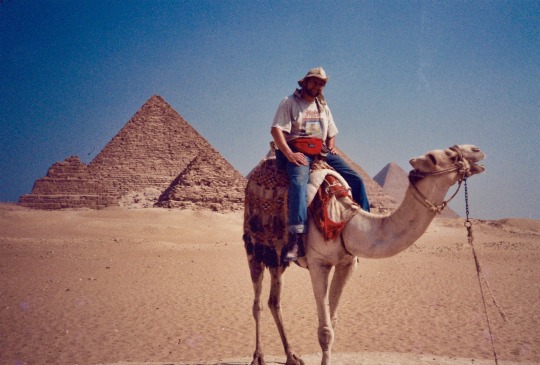
[ The author deciding whether or not to build a full-scale replica of the Great Pyramids. ]
The idea of replicating a controversial event or project to test its validity sounds simple in theory. For example some people claim that the Egyptian pyramids were made (or designed) by aliens or ancient astronauts. The (ahistorical) assumption is that people at the time didn’t have the intelligence or technology to move the stones and build a pyramid shape.
Since the pyramids were built around 2560 BC there are no photographs or depictions of them being created, though in 2015 papyrus records were found of pyramid construction tools, and legions of pyramid builders’ graves were found in 2010, for example. Egyptologists have a pretty good idea of where the rocks were quarried and how they were cut and moved, but doubters are fond of noting that scientists have never actually replicated the pyramids. They claim that skeptics or scientists must build an entire pyramid to prove how it could have been done, using materials and tools of that era.
This seems like a reasonable challenge until you realize why such an effort would never be done—not because it can’t be done but because it would be impractical. Duplicating the great Ghiza pyramid would take many years and cost tens of millions of dollars. Who’s going to pay for it? It would also be pointless, since such a replication experiment would not be valid unless you used tens of thousands of workers (estimate range from 15,000 to 40,000) and spent a decade or more building it (as the original did). If some eccentric billionaire wants to fund it he or she should feel free, but scientists recognize it as an enormous cost and effort just to disprove some wild theories about aliens—which it wouldn’t do anyway.
Replicating 9/11
A similarly misguided idea got notoriety in May 2015 when a man named Paul Salo launched a crowdfunding project which, he claimed, would prove once and for all whether the conspiracy theories about the September 11, 2001, terrorist attacks are true or not. On his Indiegogo campaign Salo wrote: “Many people want to know more about 9-11. We are like a Mythbusters for September 11th. It’s an important project for many reasons. Many people doubt various details of 9-11. As the world has changed our trust in government and media has declined significantly. We want to see for ourselves. We don’t need people to guide our thinking. In this project we will recreate 9-11 to the best of our ability given the funds raised. Our ultimate goal is a fully loaded 767 and a similar structure to the WTC. We will crash the fully loaded (with fuel) plane (complete with black box) into the building using autopilot at 500 MPH.”
Salo aimed to test the widely-challenged (in conspiracy circles anyway) claim that jet fuel can burn hot enough to sufficiently weaken a building’s steel structure that it collapses—instead of, for example, the Twin Towers coming down due to hidden explosives. While Salo’s scheme to duplicate the Twin Towers attack had a simple and populist appeal, actually pulling it off as a valid scientific experiment would be incredibly difficult and expensive, if not impossible. For a real science experiment you need to control for variables that could affect the results; in this case there are many variables including size and weight of the plane, the building type, and so on.
Salo promised that “You will be able to see for yourself what happens under these extreme circumstances. I’m not sure which country we will purchase the aircraft and building but it doesn’t really matter much.” Actually Salo would find when talking to engineers that it matters greatly where the building is, since building codes vary wildly by country and region. Buildings in earthquake-prone regions are built differently (and able to sustain greater structural damage without collapsing) than those built elsewhere. Variations in construction materials will also complicate comparisons. Each building’s architecture is different, and will not necessarily react the same way to the same structural damage. In order for the experiment to be valid, he would need to build an exact replica of the Twin Towers; not just any tall building will do, since the load-bearing structures vary from building to building.
He planned to “recreate as best as we can” the circumstances of the World Trade Center attacks. The problem is that “as best as we [that is, he] can” would leave an enormous margin of error, one so big as to make any results invalid and pointless. His results, should he have pulled it off, would be dramatic and sensational but hold no evidentiary value at all.
As with many such replications, Salo’s experiment would in fact be pointless and inconclusive no matter its outcome: If the building collapsed exactly as happened on September 11, conspiracy theorists would argue—correctly—that the conditions weren’t exactly the same as in the original building collapse. If the building collapses differently, that won’t prove anything either, for the same reason. Neither anyone questioning or defending the “official story” will accept his conclusions and admit they were wrong. Salo’s grand scheme went nowhere.
Bigfoot’s Famous Film
I’ve heard some version of this question dozens of times during my career as a monster investigator. Though I’ve investigated the best photographic evidence for several mysterious creatures—most prominently the 1977 photograph of the Champ lake monster, as seen in the articles Joe Nickell and I wrote in the July/August 2003 issue of Skeptical Inquirer and in our book Lake Monster Mysteries—I hadn’t done an in-depth investigation into the famous 1967 footage taken in Bluff Creek, California, by Roger Patterson and Bob Gimlin (P/G). The film is said to show a female Bigfoot (dubbed Patty) walking across a riverbed.

The film has been the subject of controversy and debate for half a century, and is routinely cited as the gold standard for Bigfoot footage (even some fifty-five years later, which is deeply suspicious given the ubiquity of high-quality smartphone cameras since then). Though the footage is blurry, one thing is clear: it’s either a hoax or a Bigfoot. Skeptics have offered damning analyses, both of Patterson and the murky circumstances under which the film was created and developed; see for example Greg Long’s The Making of Bigfoot and Daniel Loxton and Donald Prothero’s Abominable Science. Bigfoot believers offer a variety of responses, many of which wrongly place the burden of proof on skeptics, such as “If it’s a guy in a suit, where is the suit?” and “If it’s faked, why can’t anyone re-create the film using materials available in 1967?”
The alleged failure of the film to be recreated by researchers has long been a popular talking point among Bigfoot believers. A few examples will suffice; a fellow named Scott Renchin, in replying to a Skeptoid YouTube video about the P/G film, wrote in January 2022 that “A real skeptic would prove the film is a hoax by recreating the film using techniques and materials used to create the alleged hoax footage… the BBC did this already and failed miserably.” This same BBC show was also directed to me by noted cryptozoologist Ken Gerhard and others.
Film Replication Claims
The literature on this just-under-one minute film is both voluminous and contentious and there’s a lot to unpack. I’ll begin by noting that my focus is not on Bigfoot’s existence generally, nor even on the authenticity of the film specifically. Over and over when seeking information on this topic, respondents invariably went off topic and dove into why the film is obviously a hoax—or just as obviously authentic. Instead my topic is very specific, and simple: Who, specifically, has actually tried to replicate the film itself, using what equipment, and when? What documentation do we have of sincere, dedicated efforts by knowledgeable experts to create footage that matches the P/G image?
Researchers have tried to recreate the movement of the subject in the film. My colleague Dave Daegling, for example conducted a detailed analysis of the P/G film in his book Bigfoot Exposed and explored the question of whether a human could walk like the creature in the film. He determined that—like the creature’s size and speed which are well within human limitations—it is certainly possible for a person to walk the way it does using what’s called a compliant gait. It’s not the most comfortable method of locomotion for a human, but it’s easy to adopt with a bit of practice and doesn’t rule out a person in a suit.
It was certainly possible to create a realistic costume like that seen in the film in 1967. Planet of the Apes, for example, was released the following year, albeit with the help of professional makeup and costumers.
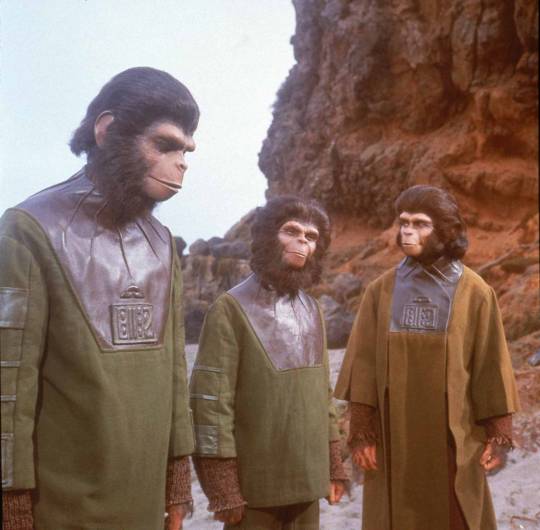
Those resources would not have been available to Patterson and Gimlin, though Planet of the Apes required close-ups of the actors including faces in sharp focus, whereas the P/G footage is at a great distance, out of focus, blurry, and unstable—all factors that (intentionally or otherwise) obscure details, thwart analysis, and facilitate fakery. The out of focus background actors in ape costumes are a very close match for “Patty.” Hollywood special effects experts including Stan Winston, when asked about the footage, have declared the footage bogus and said that what’s seen in the film would certainly have been possible in the 1960s. In fact a fairly realistic gorilla costume appeared in the film Are You With It?—from 1948, nearly two decades before Patterson and Gimlin set out to film a Bigfoot.
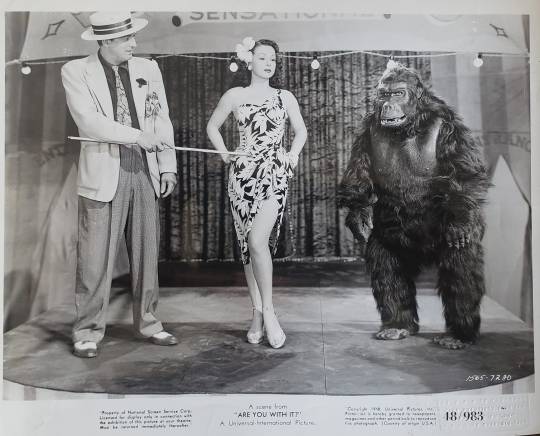
[ Film still from 1948’s “Are You With It?” ]
Instead the question is about replication of the film itself, which is a far more challenging and expensive task, and would require not only the original equipment but a reasonably similar costume, gait, location, environment, and so on.
Where’s Bigfoot (Recreations)?
Alleged films trying to replicate the P/G footage turned out to be nearly as elusive as Bigfoot itself. I found a handful of videos of television shows attempting (usually lightheartedly) to make their own Bigfoot films, while not making any serious attempt to replicate the P/G film per se. For example one show, Evening Magazine, described their half-baked, tongue-in-cheek stab at it in 2005: “We wondered what it would look like if we tried to make a Bigfoot film of our own… We picked up a gorilla suit at Champion Party Supply and made no modifications to it. We used a 16 mm film camera, roughly like the one Patterson used.”
In my questioning of Bigfoot proponents I was often assured that many (or at least “several”) attempts had been made to replicate the film, but when pressed to name one, the BBC show was prominently mentioned (often accompanied by chiding about how I should do better research). Searching for something more substantive and scientific, I reached out to Daniel Perez, a respected Bigfoot researcher and publisher of Bigfoot Times newsletter, to ask if he was aware of any attempts to replicate the film. He kindly provided a list of references to material about the film. Of those, about a half dozen were television shows, and of those only two mentioned any replication or recreation. The first was a 2007 Discovery Channel show titled Best Evidence: Bigfoot which Perez notes “covers the attempted replication of the movements seen in the P-G film” (emphasis added). As noted, this is not the question at hand and in any event if anything casts doubt on the film’s authenticity.
The second was to a 1998 BBC show titled The X-Creatures: Shooting The Bigfoot (available on YouTube under the title The X Creatures Bigfoot and Yeti); see stills below. Of this episode, Perez notes that “The show attempts to recreate the P-G film but certainly appears to fail miserably.” I reviewed the episode a dozen times, and here’s exactly how the narrator describes the attempt (at the 20 minute mark): “Using the same distances recorded at Bluff Creek, the same camera and lens, and an amateur operator, it’s possible to exactly recreate the action of 1967.”
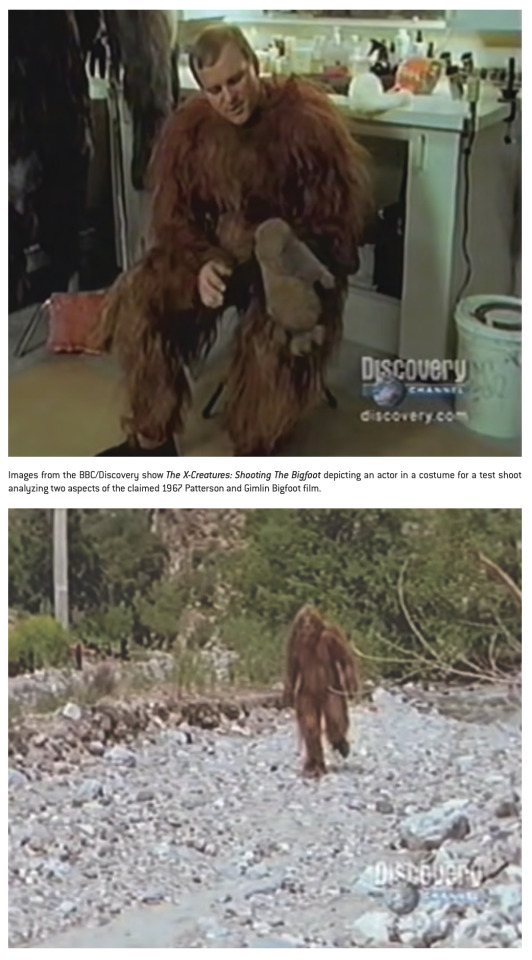
To be clear: The show at no point claims to recreate the Patterson/Gimlin film itself; instead it’s an attempt at recreating the action depicted in the film, which is a very different matter. Accident and crime reconstruction analysts recreate actions all the time, using anything from toy cars to computer animation. It’s a fairly straightforward process that does not require replicating all the relevant conditions at play when an event occurred. Even when an accident or crime is recorded on video, the investigators need not recreate the video itself, just the actions of people and objects seen in the video.
The goal of the X-Creatures show was to determine how plausible Patterson and Gimlin’s claims are using only two criteria: the reported distance, and the original camera and lens. That’s it. The show makes this crystal clear: “The most important revelation… is how close Roger and Bob were to the creature; they were right on top of it, which makes the behavior even less natural. It walked away, utterly unconcerned… At this distance, with this lens, you’re certain to get the creature in the frame—unless you artificially wobble the camera.”
There was no attempt at replicating the original film. Nor, for that matter, was there any attempt at duplicating the costume, which would be necessary for recreating the film. We can plainly see that the hair color is wrong, the hair length is wrong, the size is wrong, the musculature is wrong, and the feet they used looks nothing like what could possibly have made the tracks allegedly found at the site. The angle to the creature is wrong, the terrain is wrong, and so on.
I still have not found a single film or video attempt at recreating the Patterson/Gimlin film using period equipment, the correct location, a credible costume, and other important criteria. Defenders of the P/G film can’t have it both ways, disingenuously arguing on one hand that this BBC show was the best filmmaking expertise made to replicate the film while smugly noting that it was an obvious failure because it looks nothing like the original.
With Bigfoot proponents unable to identify a single attempted film recreation, I tried a different approach and asked Craig Scott Lamb, a filmmaker, film historian, and administrator of the Ape Suit Cinema, a Facebook group dedicated to filmed ape costumes. Lamb replied, “I know of no actual attempts by special FX professionals to replicate what was seen in the Patterson film. However considering the cost of a pro ape suit I can certainly understand the lack of motivation… In other words who’s going to foot the bill?”
Lamb’s question is as enlightening as his answer: No special effects experts he’s aware of have even tried to replicate the P/G costume—much less in service of a failed attempt to replicate the film itself— but he’s exactly correct about one of the key impediments to replication. Whether the Patterson/Gimlin film is real or not, the fact that no one has tried to replicate it is irrelevant to its authenticity.
More importantly, the Bigfoot community has the logic exactly backwards: the question is not why no one has replicated the film if it’s a hoax, but instead why no one has replicated the film if it’s real. In other words (regardless of the film’s authenticity) why does the best Bigfoot footage date back to the Lyndon Johnson administration and the release of Sgt. Pepper’s Lonely Hearts Club Band?
This poses a serious blow to the film’s credibility: these Bigfoot creatures are really out there wandering in front of eyewitnesses with cameras, why haven’t better films and videos emerged in the past fifty-six years? Both still and video cameras have become much higher quality and much cheaper over the past decades. It used to be that quality cameras were needed to take high-quality photographs; anyone could take a blurry Disneyland vacation photo with a pocket camera, but to get clear, sharp shots you often needed a more expensive camera and lens.
These days most people have a twelve megapixel high-definition camera in their pocket smartphones, which provide stabilizing, zoom, and other features that would have been the envy of Hollywood only a decade ago. At no time in history have so many people had high-quality cameras on them virtually all the time. If Bigfoot, Nessie, and the chupacabra exist, logically the photographic evidence for them should improve significantly over the years. Yet it hasn’t. Photographs of people, cars, mountains, flowers, sunsets, deer, and literally everything else in the world have gotten sharper and clearer over the years. The only exceptions are things never proven real, such Bigfoot, ghosts, and UFOs.
It’s true that replicating the P/G film would be difficult and expensive, but this has nothing to do with the content of the film. To use a simple analogy, period Hollywood films are notoriously expensive for the simple reason that to make them look authentic the production designers must locate era-appropriate props, costumes, and more. A film set in the early 1900s, for example, may need vintage vehicles, clothing, telephones, and so on. These can be rented from prop shops, but still require much more effort and cost to secure than would ordinary objects of today.
If someone did spend considerable time and effort to create a convincing costume and setting, that would not serve to silence the critics but bolster them; the response would not be, “Yes, you’re right, it can be credibly duplicated” but instead, “Yes, but see how much money you had to spend! Patterson and Gimlin didn’t have these resources, so it couldn’t have been faked!”
Replication in Investigation
Replication can certainly play an important role in skeptical investigation, though recreating the circumstances surrounding an “unexplained” event is far more crucial than necessarily duplicating or replicating a given sighting, photograph, or video.
It’s actually quite easy to capture a photographic image that cannot be replicated in every detail. A photograph is a two-dimensional representation of a split-second moment in time (depending, of course, on how long the exposure is) in a constantly changing environment. Replicating some photos is easy—a close-up of a shiny penny in fixed studio lighting, for example. But outdoor photographs, or those of urban settings, can be difficult or impossible to exactly replicate in every detail—which is the standard often demanded. Clouds come and go by the hour (sometimes by the minute); leaves move position in even a slight wind.
Keep in mind that a full and true replication may require the original people or objects, under the exact same conditions. Depending on what part of the image is under scrutiny (a dark manlike patch in shady wooded area, a face seen in a ghost image, or an odd light in the sky) the image may look different. Sunlight reflection off a gleaming polished fender of a 1958 Corvette, for example, might potentially help explain a mysterious light or image. Substituting a 1984 Honda or a 2012 Ford in a replication photograph may not get the same results.
A close-up photograph of an egg taken in 1950 might look identical to one taken with the same camera and lighting as one taken a century later in 2050. But in most cases a landscape photo will be difficult or impossible to exactly replicate 100 years later. But more importantly, the task of recreating the film, as a practical matter, is enormously difficult under the best of circumstances. We can begin with the terrain, which like all other natural habitats, has of course changed significantly in the past fifty-five years. Consider all the environmental factors at play: Trees die and fall, rivers and streams move, and so on.
I’ve done replication in some of my investigations, including for the Santa Fe Courthouse Ghost, Sandra Mansi’s photograph of the Lake Champlain monster, and so on. But I’m always careful to include qualifiers and not claim to have duplicated anything exactly, but merely as best I can under the circumstances. Claims about how skeptics can’t (or won’t) duplicate things such as the Patterson/Gimlin Bigfoot film, or the pyramids, or anything else are spurious red herrings.
The question has broader implications for investigative skepticism. In many cases, using the principle of Occam’s Razor, replication should be enough to demonstrate that an extraordinary claim is indeed unlikely to be true. For example self-described psychic-turned-“entertainment artist” Uri Geller rose to international prominence in the 1970s and 1980s performing various acts which could be—and have been—duplicated by professional magicians, perhaps most notably the late Amazing Randi. This does not of course provide conclusive proof that Geller was simply a skilled magician instead of a psychic, which is after all impossible to prove. It does, however, give critical thinkers a logical, rational, science-based reason to doubt the claims.
Science is based on comparisons—between control groups and experimental groups, for example. By controlling variables and comparing two groups of people or situations, scientists can tease out what factors are at play. The key here is the variables under control. A photograph, film, or video represents a fixed—and usually very short—moment in time. With the exception of long exposures, most photos are a two-dimensional representation of what was in front of a lens for a fraction of a second. We can’t see what happened just before or after the shutter opened. The P/G film, which is after all just a series of photographs when speeded up give the illusion of movement, is just under a minute long, and one reason it’s suspect is that we don’t see the figure coming into or exiting the frame.
For more on the topic of science and replication see my Skeptical Inquirer article “Skepticism and Pseudoexperiments” in the September/October 2020 issue.
Data Replication
Though I’ve focused here mostly on photographic replication, there are other aspects worth mentioning. The issue of replication in science is pretty straightforward: It’s essential for establishing the validity on an experiment. Because well-controlled studies are difficult to design and carry out, there is always the chance that a given outcome will be the result of random chance, experimenter bias, or any number of other factors. If a result is true and valid, then any other researchers following identical procedures should, in theory, get similar result—though, it should be noted, they may not necessarily interpret the results in the same way.
Replication is such an issue in science that the inability to replicate results has garnered significant attention. BBC News reported that “Concern over the reliability of the results published in scientific literature has been growing for some time. According to a survey published in the journal Nature more than 70% of researchers have tried and failed to reproduce another scientist’s experiments.” Skeptical investigation sometimes involves designing experiments and scientific protocols, for example when testing dowsers, psychics, and others (see, for example, “Testing Natasha” by Ray Hyman in the May/June 2005 SI and Jim Underdown’s work with the Los Angeles-based Independent Investigations Group).
Depending on what’s being measured, replication can be difficult under the best of circumstances. If you’re trying to replicate a population study it’s important to look at the statistical methodology to be sure a representative sample was used; slight variations in the underlying populations can introduce confounders and thus create spurious (Type I and Type II) errors, suggesting that an experiment has not been replicated when in fact it has, or vice-versa.
Whether the topic is a famous Bigfoot film, 9/11 attacks, pyramids in Egypt, psychic powers, or anything else, the oft-heard complaint that something can’t be—or hasn’t been—duplicated or replicated is often a red herring. Despite its strong anti-elitist and populist appeal, the claim demonstrates a fundamental lack of knowledge about control groups and science in general.
#skepticism#scepticism#science#replication#Benjamin Radford#skeptic#sceptic#sceptical investigation#skeptical investigation#bigfood#pyramids of giza#pyramids of ghiza#9/11#September 11#world trade center#9/11 attacks#science experiments#what science is#religion is a mental illness
7 notes
·
View notes
Text
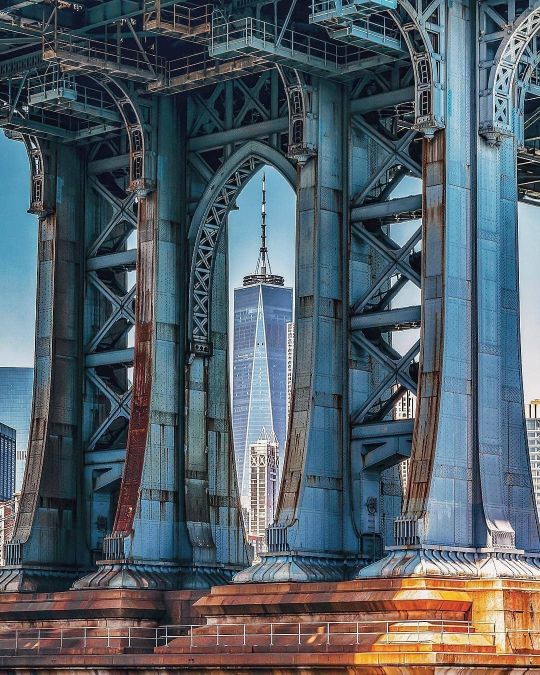
Framing Freedom
One World Trade Center, also known as One World Trade, One WTC, and formerly called the Freedom Tower during initial planning stages, is the main building of the rebuilt World Trade Center complex in Lower Manhattan, New York City. Designed by David Childs of Skidmore, Owings & Merrill, One World Trade Center is the tallest building in the United States, the tallest building in the Western Hemisphere, and the seventh-tallest in the world.
The construction of below-ground utility relocations, footings, and foundations for the new building began on April 27, 2006. One World Trade Center became the tallest structure in New York City on April 30, 2012, when it surpassed the height of the Empire State Building. The tower's steel structure was topped out on August 30, 2012. On May 10, 2013, the final component of the skyscraper's spire was installed, making the building, including its spire, reach a total height of 1,776 feet (541 m). Its height in feet is a deliberate reference to the year when the United States Declaration of Independence was signed. The building opened on November 3, 2014; the One World Observatory opened on May 29, 2015.
3 notes
·
View notes
Text
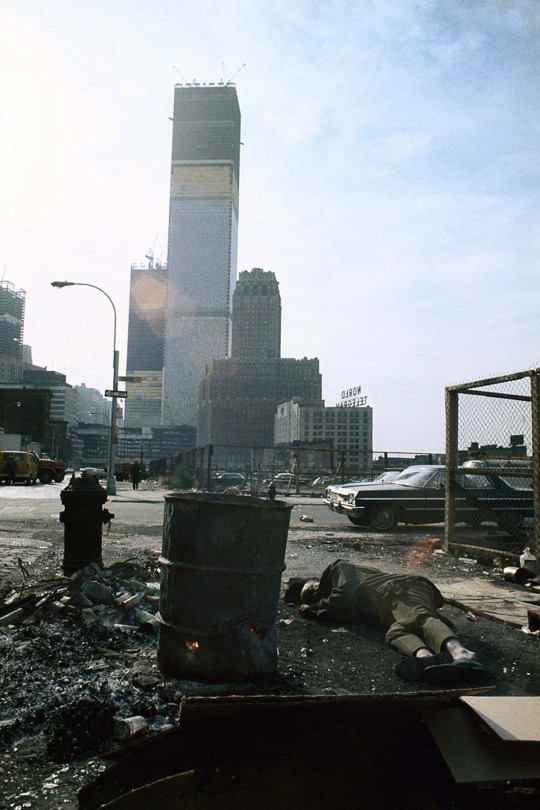
WTC under construction. Wealth vs. poverty.
6 notes
·
View notes
Text
Mato Grosso to Have 'Agro World Trade Center' Worth $ 273 million
Tower in Sinop will be 106 meters high in a complex with 10 buildings on circular land
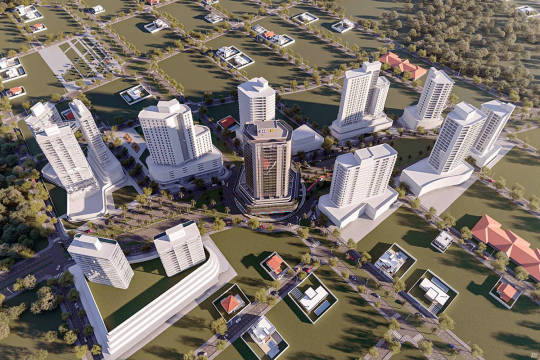
The municipality of Sinop, in Mato Grosso, is expected to have by 2029 a 25-story tower built on a 4,000 m² roundabout, in a development called the World Trade Center of Agribusiness, referencing the city's vocation with its 196,000 inhabitants.
Ten buildings will be constructed in the complex, divided into hotel, hospital, and educational sectors, with an investment of R$ 1.5 billion ($ 273 million). The estimated return is R$ 6 billion ($ 1 billion).
The project, built in partnership with the WTC (World Trade Center) brand, which has about 300 buildings in 90 countries, has been under construction since April and has been named Sky 360, standing 106 meters tall with 36,000 m² of constructed area.
Source.
2 notes
·
View notes
Text



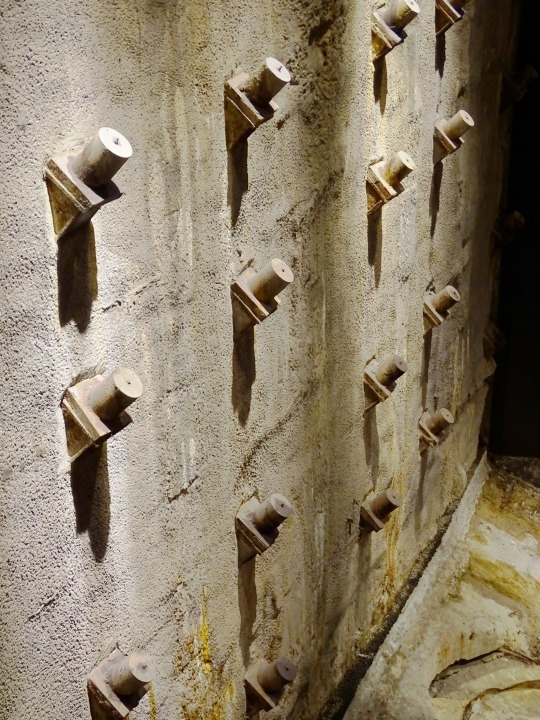
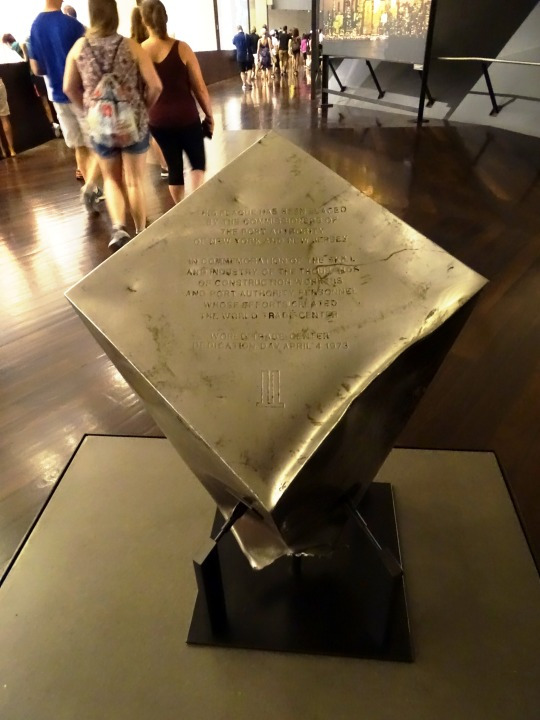
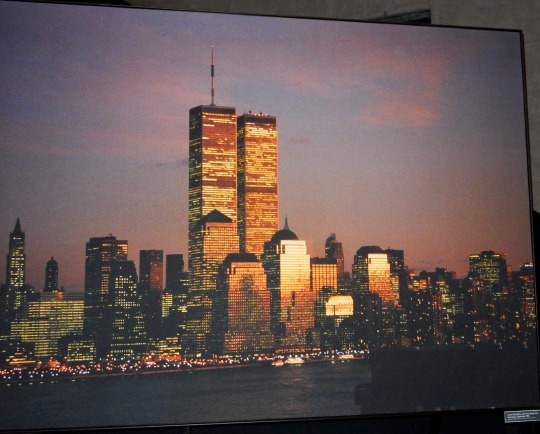
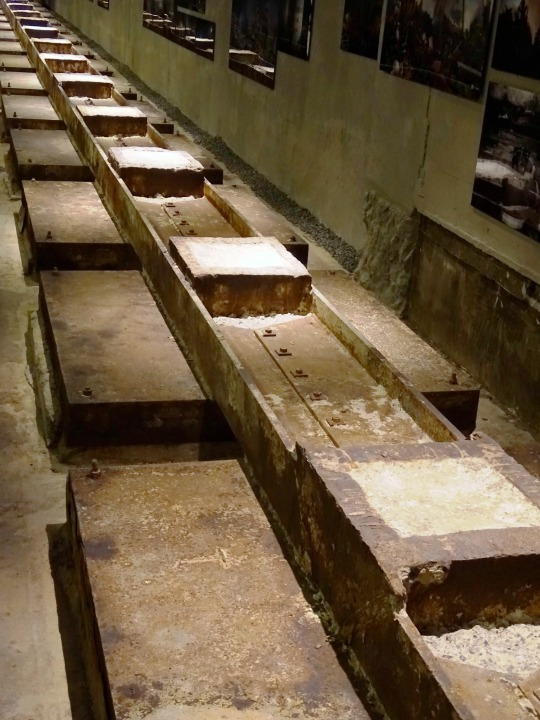


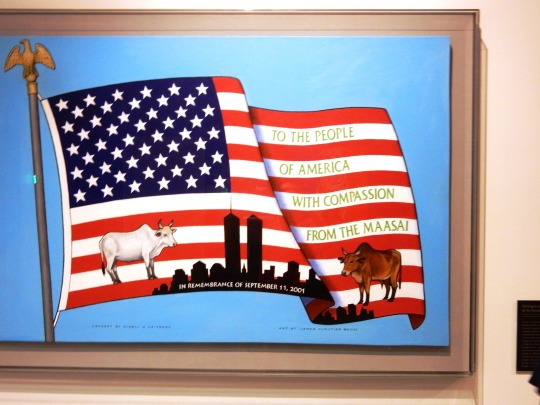

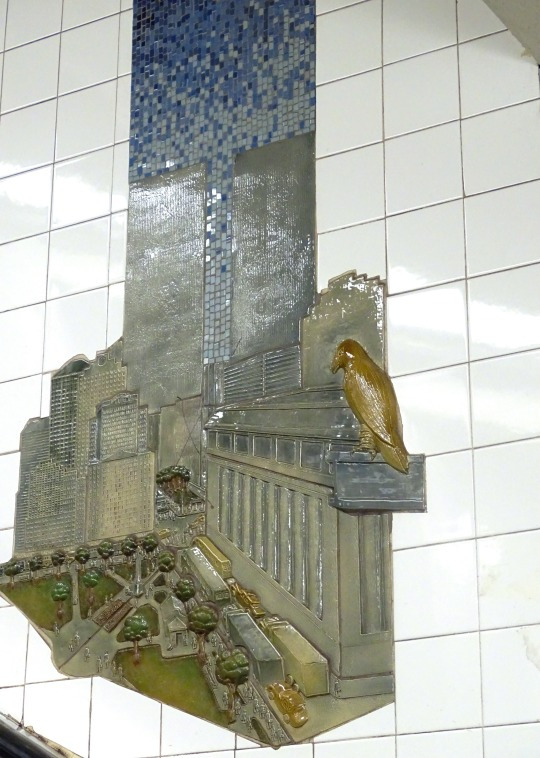

The Twin Towers of the World Trade Center in New York City were officially dedicated on April 4, 1973.
#WTC Construction Dedication Pedestal#WTC by Frank Giorgioni#mosaic#USA#National September 11 Memorial & Museum#New York City#travel#summer 2018#FDNY Memorial Wall Story#Twin Towers#World Trade Center#dedicated#4 April 1973#anniversary#US history#skyscraper#Lower Manhattan#1 WTC#2 WTC#1 World Trade Center#Minoru Yamasaki#Emery Roth & Sons#Leslie E. Robertson#original photography#tourist attraction#architecture#vacation#cityscape#landmark
1 note
·
View note
Text
Winexch In-Match Analysis: WTC Final — Australia vs South Africa Day 1

The much-anticipated World Test Championship (WTC) Final between Australia and South Africa kicked off with high expectations and an electric atmosphere. Cricket enthusiasts from around the world tuned in to witness two of the most formidable teams battle for supremacy on the grandest stage of Test cricket. With conditions favouring a balanced contest between bat and ball, Day 1 delivered intense action, tactical brilliance, and moments that will be remembered for years.
Winexch brings you the In-Match Analysis with expert-driven Inplay Sports Prediction and statistical insights to help fans decode the action in real-time. From pitch behaviour to session-wise momentum shifts, we present a data-backed review of Day 1’s play. Stay tuned with Winexch throughout the WTC Final for continued updates and strategic match insights.
Toss and Early Decisions
South Africa won the toss and elected to bowl first, banking on the early morning conditions and slight cloud cover to assist their pace battery. The pitch had a hint of grass, and initial overhead conditions seemed to favour seam and swing. Australia’s openers, David Warner and Usman Khawaja, walked out with caution as they knew the importance of surviving the new ball.
Inplay Sports Prediction Tip: Early morning sessions often tilt towards fast bowlers. Look for quick wicket falls within the first 15 overs in such conditions.
Australia’s Steady Start and Sudden Jolt
The Australian openers began with measured caution. The first hour saw a solid defense and minimal risks taken. Warner looked to rotate strike while Khawaja remained compact. However, South Africa’s Kagiso Rabada struck early with a peach of a delivery that seamed away from Warner, dismissing him for 18.
Labuschagne’s entry added stability. His partnership with Khawaja steadied the innings, with both showing patience and capitalising on bad deliveries. By Lunch, Australia had reached 75/1, building a solid base.
Inplay Sports Prediction Update: Partnerships of 50+ runs at the start generally lead to first innings totals of 300+ in Test finals. Momentum was with Australia at this stage.
Mid-Session Drama: South Africa Strikes Back
The post-lunch session brought the drama. Lungi Ngidi and Marco Jansen bowled a brilliant spell, breaking Australia’s rhythm. Jansen dismissed Khawaja for 42 with an in swinger that kept low, and within a few overs, Ngidi sent Smith back for just 14. Australia went from 100/1 to 123/4 in quick succession.
The game shifted, and South Africa’s bowlers took control, showing excellent use of seam movement. The aggressive field placements and controlled lengths brought wickets at crucial intervals.
Inplay Sports Prediction Insight: After a team loses 3 wickets in 10 overs, the run rate typically drops by 25% for the next 20 overs. South Africa capitalised on this pressure effectively.
Travis Head and Carey Revive the Innings
Just when it seemed Australia would fold under pressure, Travis Head and Alex Carey constructed a gritty partnership. Head’s counter-attacking approach disrupted South Africa’s plans. He smashed back-to-back boundaries off Jansen and looked at ease against spin as well.
Carey, on the other hand, played second fiddle, rotating strike smartly. By Tea, the duo had added 85 runs, pushing Australia to a safer zone at 208/4. Head’s aggressive 74* stood out as the highlight of the day.
Winexch Momentum Check: The Head-Carey partnership shifted Winexch’s momentum meter to 62% in favour of Australia heading into the final session.
Final Session Highlights: Balanced End
The final session saw a balanced contest. South Africa broke the 100+ run stand by dismissing Carey for 38, courtesy of Maharaj’s subtle turn. However, Head continued his charge and reached a well-earned century — his 7th in Test cricket — proving his value in high-pressure matches.
Australia closed Day 1 at 294/6, with Mitchell Starc giving company to Head. Despite losing wickets, the scoring rate remained healthy, and the pitch showed signs of being a good batting surface for Day 2.
Inplay Sports Prediction Summary: Teams scoring 280+ on Day 1 in Test finals have historically won 70% of the matches. Australia are in a strong position with wickets in hand and a set batter at the crease.
Key Performers of the Day
Travis Head — 113* (156): Aggressive, confident, and game-changing.
Kagiso Rabada — 2/49: Provided early breakthroughs
Marco Jansen — 2/52: Used bounce and seam effectively.
Winexch Game Changer: Travis Head’s fearless innings turned the tide for Australia.
Tactical Takeaways and Day 2 Outlook
Australia’s Upper Hand: Despite mid-innings setbacks, they ended strong.
South Africa Needs Early Wickets: To prevent the tail from wagging and control the target score.
Pitch Assessment: Slightly eased out as the day progressed; batting expected to become better on Day 2 morning session.
Stay tuned with Winexch for Day 2 predictions, ball-by-ball insights, and exclusive match breakdowns using real-time data.
Conclusion: Day 1 Sets the Tone
The WTC Final has already lived up to expectations with a thrilling Day 1. Australia’s resilience, Travis Head’s brilliance, and South Africa’s fighting spirit laid the foundation for what promises to be a gripping contest.
Stay tuned with Winexch for detailed session updates, exclusive player performance metrics, and expert-driven Inplay Sports Prediction throughout the WTC Final. Whether you’re a casual viewer or a cricket strategist, Winexch ensures you stay ahead of the action.
FAQ: Winexch In-Match Analysis & Inplay Sports Prediction
Q1: What is Inplay Sports Prediction? A: Inplay Sports Prediction is the real-time analysis and projection of match outcomes based on current game scenarios, player form, pitch conditions, and historical data. It helps fans understand momentum shifts and expected results.
Q2: How does Winexch provide in-match insights? A: Winexch uses live data tracking, AI-powered metrics, and expert commentary to provide session-by-session reports, highlighting turning points and key performers.
Q3: Can I follow Winexch for live analysis during the game? A: Yes, Stay tuned with Winexch for ball-by-ball commentary, predictive insights, and session reviews across all five days of the WTC Final.
Q4: Is Inplay Sports Prediction accurate? A: While no prediction is 100% guaranteed, Inplay Sports Prediction is grounded in data trends and match analytics, making it a highly reliable guide for understanding the match as it unfolds.
0 notes
Text
WTC 2025: Where Innovation Meets Connection

The World Tunnel Congress 2025 in Stockholm brought together global tunnelling experts for a week of knowledge sharing, collaboration, and personal reconnection. From advanced insights to memorable conversations with peers, the event truly captured the spirit of progress and community in underground construction. Looking forward to WTC 2026 already!
0 notes
Text
Top Builders in Chennai
Top Builders in Chennai: Redefining Excellence in Construction
Chennai, the bustling capital of Tamil Nadu, is a city where tradition meets modernity. As one of India’s fastest-growing metropolises, it’s home to a thriving real estate market. Among the many contributors to the city’s skyline, the top builders in Chennai stand out for their innovation, quality, and commitment to creating spaces that inspire. Whether you're seeking luxury apartments, affordable housing, or commercial spaces, Chennai's builders cater to a diverse range of needs.
The Real Estate Landscape in Chennai
1. The Growth of Chennai’s Real Estate Market
Chennai’s real estate market has witnessed steady growth over the years, fueled by factors such as urbanization, infrastructure development, and the influx of IT companies. The city’s strategic location along the Bay of Bengal, coupled with its cultural and economic significance, makes it a preferred choice for both residential and commercial investments.
2. Key Areas of Development
South Chennai: Localities like OMR, ECR, and Velachery are popular for IT hubs and luxury residences.
North Chennai: Known for industrial growth and affordable housing options.
Central Chennai: Prime areas like T. Nagar and Nungambakkam offer premium real estate opportunities.
What Makes a Builder the Best?
1. Quality of Construction
The hallmark of a top builder is their commitment to quality. From sourcing premium materials to adhering to safety standards, these builders ensure long-lasting constructions.
2. Timely Delivery
Meeting project deadlines is critical in the real estate industry. Top builders in Chennai are renowned for their punctuality, ensuring that customers receive their homes or commercial spaces on time.
3. Customer-Centric Approach
A builder’s reputation depends significantly on customer satisfaction. From transparent pricing to excellent after-sales service, the best builders prioritize their clients.
Top Builders in Chennai
1. Traventure Homes
Overview: Traventure Homes has earned a stellar reputation as one of the top builders in Chennai, known for their innovative designs and high-quality projects.
1.1 Key Projects by Traventure Homes
Luxury Apartments: Designed with modern architecture and state-of-the-art amenities.
Affordable Housing: Projects catering to middle-income families without compromising on quality.
Commercial Spaces: Functional and aesthetically pleasing offices and retail spaces.
1.2 Why Choose Traventure Homes?
Innovation: Unique designs tailored to modern lifestyles.
Sustainability: Focus on eco-friendly construction practices.
Customer Trust: Positive testimonials from satisfied clients.
2. Prestige Group
Overview: A renowned name in South India’s real estate market, Prestige Group is synonymous with luxury and excellence.
2.1 Signature Projects in Chennai
Prestige Courtyards: Premium apartments with world-class amenities.
Prestige Bella Vista: A township that redefines community living.
2.2 Key Strengths
Experience: Decades of expertise in delivering landmark projects.
Design Excellence: Architectural brilliance combined with functional spaces.
3. Casagrand Builders
Overview: Casagrand Builders is known for offering affordable luxury with a focus on customer satisfaction.
3.1 Notable Projects
Casagrand Athens: A Greek-inspired community with top-notch facilities.
Casagrand First City: A township designed for modern living.
3.2 Distinct Features
Affordability: High-quality homes at competitive prices.
Innovation: Unique themes and concepts for residential projects.
4. Brigade Group
Overview: Brigade Group has a strong presence in Chennai, offering a mix of residential, commercial, and hospitality projects.
4.1 Landmark Projects
Brigade Residences at WTC: Luxurious homes in a prime location.
Brigade Xanadu: A Spanish-themed township.
4.2 Highlights
Integrated Townships: Comprehensive living experiences with all amenities.
Sustainability Initiatives: Green building practices for eco-friendly living.
Emerging Trends in Chennai’s Real Estate
1. Green Building Practices
Sustainability is becoming a priority, with builders incorporating energy-efficient designs, rainwater harvesting, and solar power.
2. Smart Homes
Automation and IoT are revolutionizing home living. From smart security systems to voice-controlled appliances, builders are integrating technology seamlessly.
3. Community Living
Townships and gated communities are gaining popularity, offering a blend of privacy and shared amenities like parks, gyms, and clubhouses.
Choosing the Right Builder in Chennai
1. Research and Reviews
Check online reviews and testimonials.
Visit completed projects to assess quality and maintenance.
2. Budget and Requirements
Align your budget with the builder’s offerings.
Look for projects that meet your specific needs, whether it's proximity to schools, workplaces, or hospitals.
3. Transparency and Documentation
Ensure the builder provides clear details about costs, timelines, and legal approvals.
Verify property documents with legal experts.
Conclusion
Chennai’s real estate market is teeming with opportunities, thanks to the city’s top builders who are redefining urban living. From Traventure Homes to Brigade Group, these builders offer a mix of innovation, quality, and trust. By understanding the market, researching builders, and identifying your requirements, you can find the perfect property in this vibrant city.

0 notes
Text
I'll save the rest of you time, not a single one of those links refers to a terrorist attack orchestrated by the FBI - in only one case was an attack carried out at all (the WTC bombing) and the FBI allegedly helped with the bomb construction, but isn't alleged by credible sources to know where it would be used.
It's reasonable to conclude that these posters have presented 0 evidence of the US government "orchestrating" any attacks on the US in the last 30ish years.
There's plenty of evidence of entrapment or making vulnerable people into terrorist sympathizers so they could arrest them, but that's obviously a different thing.


Hamas has no reason to attack US citizens as polls show the public is becoming increasingly pro Palestine the longer this conflict goes on. Also Hamas is very busy currently fighting a guerilla war against the IDF inside the Gaza Strip.
#shitty discorse#don't be impressed by someone who shares a bunch of hyperlinks#it's easy to make claims that aren't supported by the aources#but at the same time it's nice they made it so easy to see the intellectual deciet they're promoting
15K notes
·
View notes
Text
[ad_1] New Delhi [India], January 3 (ANI): Prime Minister Narendra Modi will visit newly constructed flats for the dwellers of Jhuggi Jhopri (JJ) clusters under the In-Situ Slum Rehabilitation Project at Swabhiman Apartments, Ashok Vihar, Delhi, at around 12:10 PM, on Friday (January 3). At around 12:45 PM, he will inaugurate and lay the foundation stone of multiple development projects in Delhi. The Prime Minister will inaugurate the 1,675 newly constructed flats for the dwellers of JJ clusters and also hand over keys to eligible beneficiaries at Swabhiman Apartments in Ashok Vihar, Delhi. The inauguration of newly constructed flats will mark the completion of the second successful In-Situ Slum Rehabilitation Project by the Delhi Development Authority (DDA). The objective of the project is to provide the residents of the JJ clusters in Delhi with a better and healthier living environment equipped with proper amenities and facilities. For every Rs 25 lakh spent on the construction of a flat by the government, eligible beneficiaries pay less than 7 per cent of the total amount, comprising Rs 1.42 lakh as a nominal contribution and Rs 30,000 for five years of maintenance. PM Modi will also inaugurate two urban redevelopments projects- the World Trade Centre (WTC) at Nauroji Nagar and the General Pool Residential Accommodation (GPRA) Type-II Quarters at Sarojini Nagar. The World Trade Centre at Nauroji Nagar has transformed the area by replacing over 600 dilapidated quarters with state-of-the-art commercial towers, offering around 34 lakh square feet of premium commercial space with advanced amenities. The project incorporates green building practices, with provisions such as a zero-discharge concept, solar energy generation, and rainwater harvesting systems. The GPRA Type-II Quarters at Sarojini Nagar includes 28 towers that house over 2,500 residential units, offering modern amenities and efficient use of space. The project's design incorporates rainwater harvesting systems, sewage and water treatment plants, and solar-powered waste compactors encouraging eco-conscious living. The Prime Minister will also inaugurate CBSE's Integrated Office Complex at Dwarka, Delhi built at around Rs 300 crore. It includes offices, auditorium, advanced data center, comprehensive water management system among others. The ecofriendly building has been constructed to high environmental standards and was designed as per Platinum Rating standards of the Indian Green Building Council (IGBC). The Prime Minister will lay the foundation stone of three new projects in Delhi University worth over Rs 600 crore. It includes Eastern Campus at Surajmal Vihar in East Delhi and Western Campus at Dwarka. It also includes building Veer Savarkar College at Roshanpura, Najafgarh, having state-of-the-art facilities for education. (ANI) [ad_2] Source link
0 notes